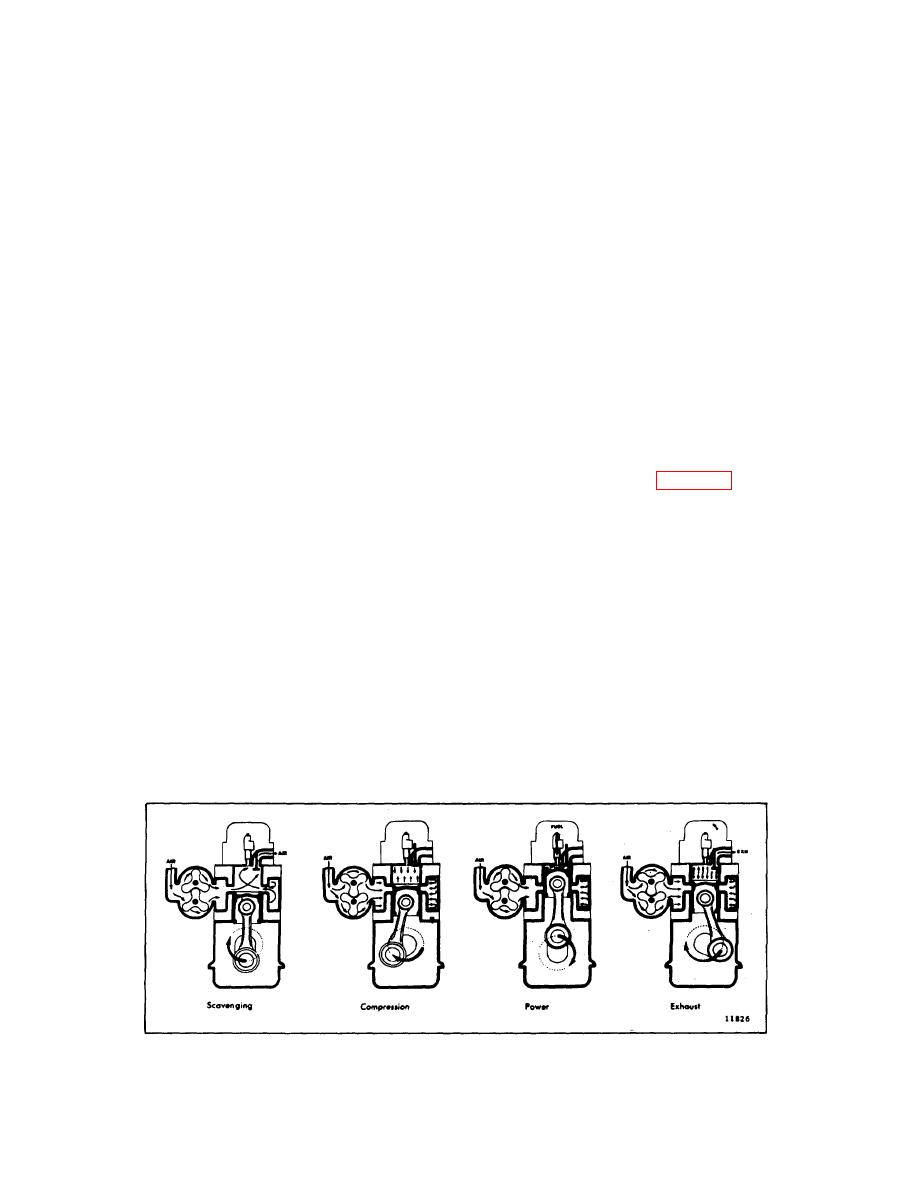
TM 5-3895-359-14&P
B. Hydraulic pump for crane, tailboard and spray bar
Volumes of liquid up to 500 gallons per minute can be
This pump is a positive displacement, gear type and is
obtained and controlled with extreme accuracy. This
mounted at the rear of the engine off the accessory
system minimizes the number of re-mix passes,
drive opposite the engine tachometer. This pump
advances the travel speeds, which also benefits the tank
supplies oil to the crane and tailboard rams, and to the
trucks resulting in fewer problems that otherwise might
spray bar ram.
be encountered at slower travel speeds.
C. Hydrostatic pump, traction drive Pump is located at
Diesel Engine Principles of Operation
the front of the engine and driven off the engine
crankshaft. The pump is of variable displacement type
The diesel engine is an internal combustion power unit,
and supplies oil under pressure to the hydrostatic motor.
in which the heat of fuel is converted into work in the
cylinder of the engine.
D. Hydrostatic motor, fixed displacement Mounted on
the 2 speed trans. or nose box of the rear axle
In the diesel engine, air alone is compressed in the
differential, motor receives oil from the hydrostatic
cylinder; then, after the air has been compressed, a
pump and drives the rear axle assembly.
charge of fuel is sprayed into the cylinder and ignition is
accomplished by the heat of compression.
E. Oil reservoir The oil reservoir is located to the left
side of the engine dash assembly just below the
The Two-Cycle Principle
hydraulic control valve and supplies and receives oil for
the entire hydraulic system, except power steering.
In the two-cycle engine, intake and exhaust take place
during part of the compression and power strokes
F. Hydraulic control valve A two spool dual control
respectively, as shown in Fig. 1-3. In contrast, a four-
valve is used. The valve spools are 4-way type and the
cycle engine requires four piston strokes to complete an
valve has an "open center" or neutral position which
operating cycle; thus, during one half of its operation,
permits the oil to be pumped unrestricted from the
the four-cycle engine functions merely as an air pump.
reservoir thru the pump and control valve back to the
reservoir.
A blower is provided to force air into the cylinders for
expelling the exhaust gases and to supply the cylinders
V.P.I. Fluid Handling System
with fresh air for combustion. The cylinder wall contains
a row of ports that are above the piston when it is at the
The V.P.I.
is an electrically instrumented system
bottom of its stroke. These ports admit the air from the
provisioned with gauges and a liquid control to visually
blower into the cylinder as soon as the rim of the piston
indicate to the operator the performance of the fluid
uncovers the ports (scavenging).
handling system.
The unidirectional flow of air toward the exhaust valves
It operates on an electrical balance principle that
produces a scavenging effect, leaving the cylinders full
integrates the fluid rate of flow with the stabilizer travel
of clean air when the piston again covers the inlet ports.
speed, fulfilling the need for more accurate control and
faster dispersion of liquid, (emulsified asphalt, water or
asphalt cutbacks).
Figure 1-3. Two-Stroke Cycle Operation
3

